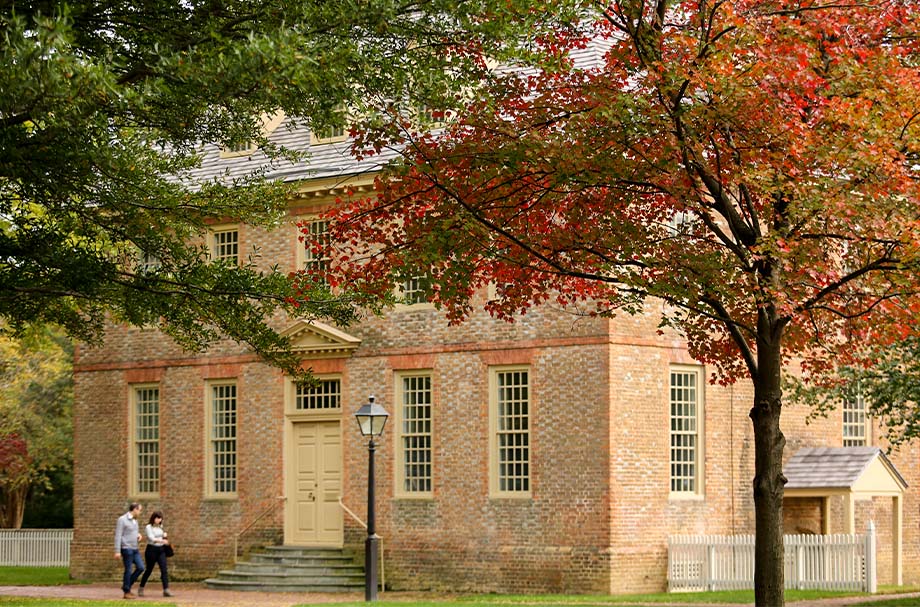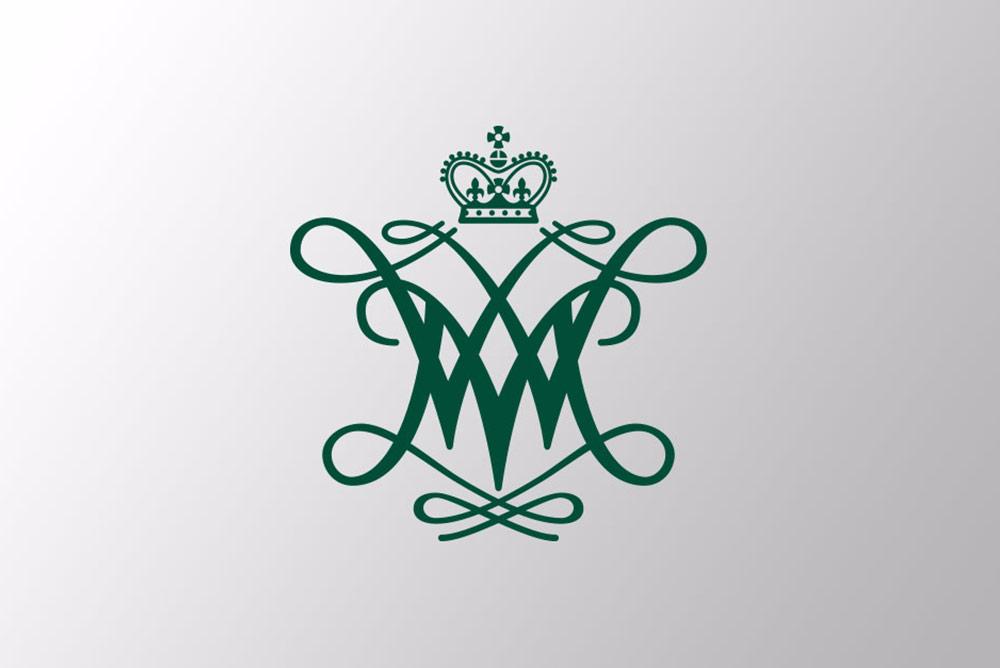The Brafferton Building
"A good house and apartments for the Indian master and his scholars."

Completed in 1723, the Brafferton building, a Georgian structure that originally housed Indigenous grammar school students and their teacher or “master,” remains a key structure on William & 玛丽’s historic campus. Beyond its architectural grandeur the building is a testament to an eighteenth-century history of Indigenous and British colonial interactions on a contested colonial landscape. The building’s prominence speaks to the importance of developing and maintaining ties to the vibrant Native communities which were so vital to European colonial powers.
The establishment of an “Indian School” was interwoven into the text of the college’s founding document. The 1693 Royal Charter for the College of William & 玛丽 points to the close ties between the Church of England and civic structures, “that the Christian faith may be propagated amongst the Western Indians, to the glory of Almighty God...” The 1727 Statutes of William & 玛丽 reaffirmed the College’s commitment to Native education, to “teach the Indian boys to read, and write, and vulgar Arithmetick ... to teach them thoroughly the Catechism and the Principles of the Christian Religion.” All Native and non-Native boys adhered to this curriculum.
The Indian School at William & 玛丽 took its name from the Brafferton Estate, an agricultural manor in Yorkshire, England. Purchased by the executors of the scientist Robert Boyle, rents from the leased farmlands of the Brafferton Estate were used to support the Native students at William & 玛丽’s Brafferton Indian School. An additional £90 were sent annually to the Society for the Propagation of the Gospel in New England (SPGNE), a British missionary organization. For several decades in the eighteenth-century rents from the Brafferton Estate were shared among Harvard Indian College, William & 玛丽, and later, Dartmouth College under the auspices of the SPGNE.
公关
Professor of Mathematics Hugh Jones offered in 1724 that the newly constructed Brafferton building was “a good House and Apartments for the Indian Master and his Scholars.” Architectural research on the Brafferton building indicates the new structure had two main floors divided by a wide center hall. To the west, there was a single large room, likely used as a classroom. To the east, were two smaller rooms providing an apartment for the “Indian Master,” or Instructor of the Indian students. The young scholars slept in dormitories on the second floor and took meals with the rest of William & 玛丽 in the great hall of the Wren Building.
Wh
During the American Revolution, the monies from the Brafferton Estate in Yorkshire, England were withheld and the Brafferton Indian School, like the college itself, shut down. In 1790, the university brought a lawsuit to reinstate the rental funds from the Brafferton Estate. The London court ruled against the William & 玛丽 and the Indian School was permanently closed, ending what was arguably the most impactful Native school in British colonial America.
With the closure of the Indian School the building was repurposed multiple times as a dining hall, faculty residence, dormitory, and classroom building. During the 1950s and '60s, the Alumni Society offices and activities were located in the building and at times special guests visiting campus were provided guest rooms in the storied structure.
At present the offices of the president and Provost of the university are located within the Brafferton’s stately edifice. Despite changes in function, the Brafferton building stands as a reminder of its original purpose to educate Native youth in Virginia. In 2023, the university will commemorate the three hundredth anniversary of the opening of the Brafferton building on its historic campus. With the approaching anniversary, the university has embarked upon a reengagement with the Indian School’s deep history, and the colonial school’s role in the complex trans-Atlantic World of the eighteenth-century. Embracing a commitment to building sustainable and ongoing relations with the Brafferton-linked tribal communities, and beyond, numerous civically engaged partnerships are underway involving cross-disciplinary scholarship and applied research.
Further Reading
Chappell, Edward A. "The Brafferton Indian School in its Physical and Imperial Contexts." In Building the Brafferton : the Founding, Funding, and Legacy of America’s Indian School, edited by Danielle Moretti-Langholtz and Buck Woodard, 151-160. Williamsburg, Va: Muscarelle Museum of Art, 2019.
















